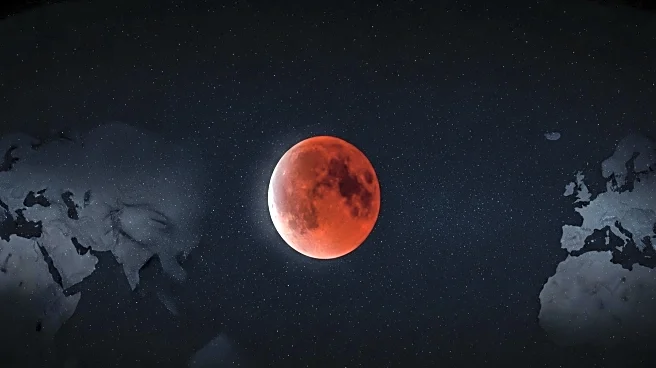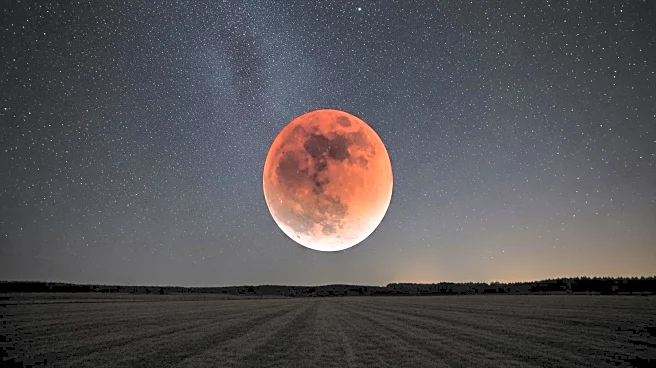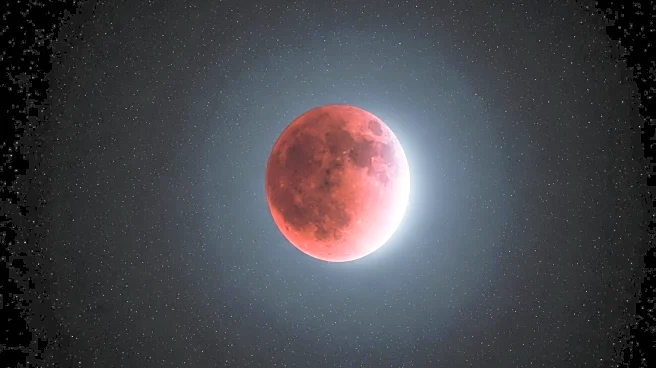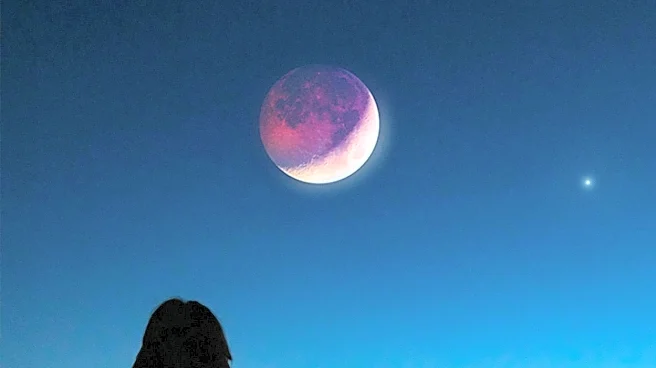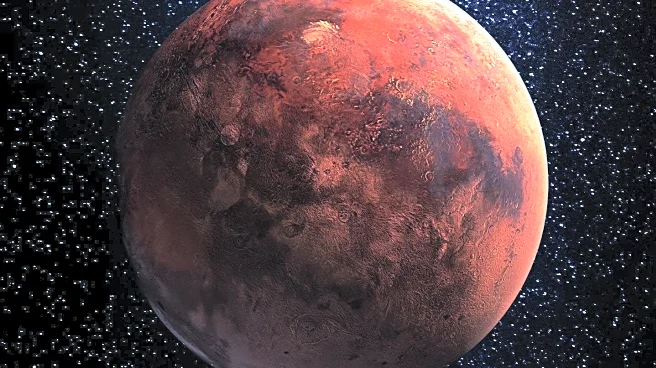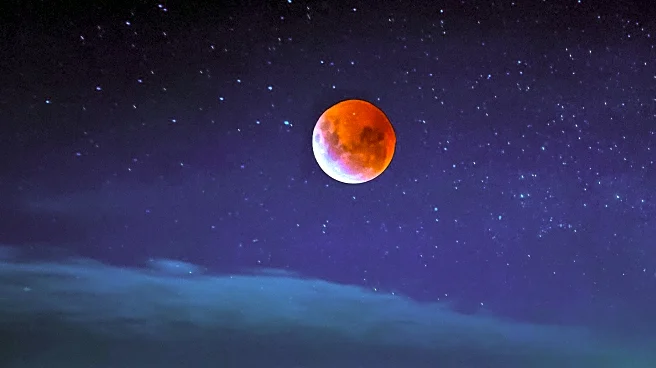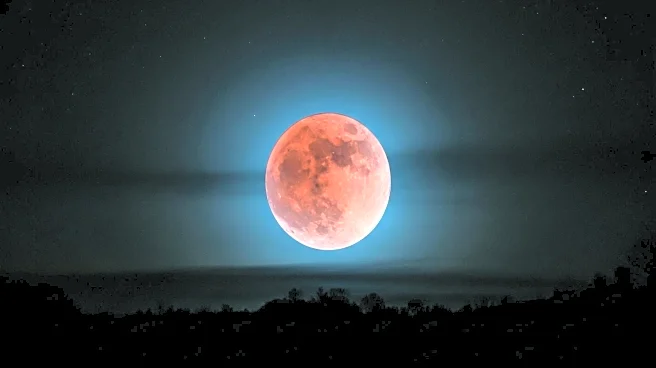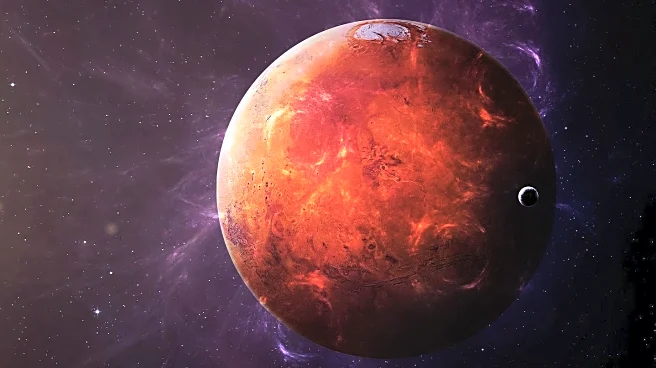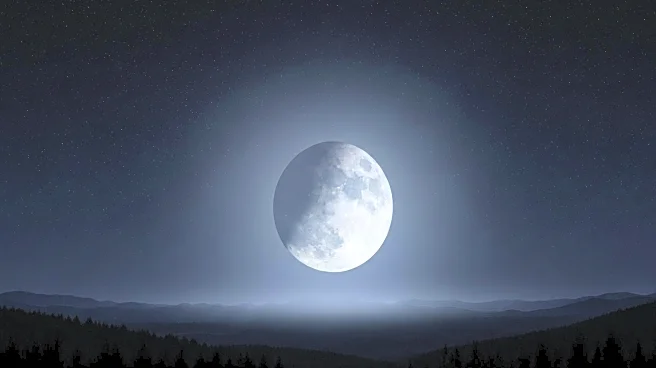What's Happening?
A total lunar eclipse, known as the 'blood moon,' is set to occur overnight on September 7-8. This astronomical event will be visible across Asia, Western Australia, and Europe, with the eclipse reaching its peak at 5:11 p.m. EDT on September 7. During the eclipse, the moon will appear red due to Earth's atmosphere filtering sunlight. The totality phase will last approximately 82 minutes, offering a striking visual spectacle. Various regions will experience the eclipse at different times, with about 77% of the global population able to witness the event.
Why It's Important?
The blood moon is a significant astronomical event that captivates skywatchers and highlights the natural phenomena of celestial bodies. It provides an opportunity for scientific observation and public engagement with astronomy. The widespread visibility of the eclipse across multiple continents emphasizes the global nature of such events and fosters a sense of shared experience among diverse populations. Additionally, it serves as a reminder of the intricate dynamics between Earth and its celestial neighbors.
What's Next?
Skywatchers are encouraged to observe the eclipse and capture photographs of the blood moon. For those unable to view the event live, several free livestreams are available, allowing enthusiasts to enjoy the spectacle from home. The eclipse also presents an opportunity for educational outreach, with astronomers and educators likely to discuss the science behind lunar eclipses and their significance.
